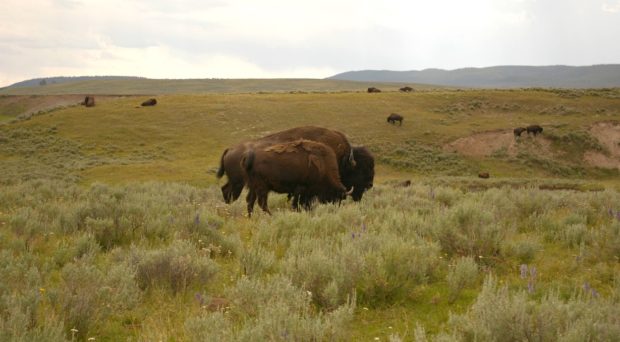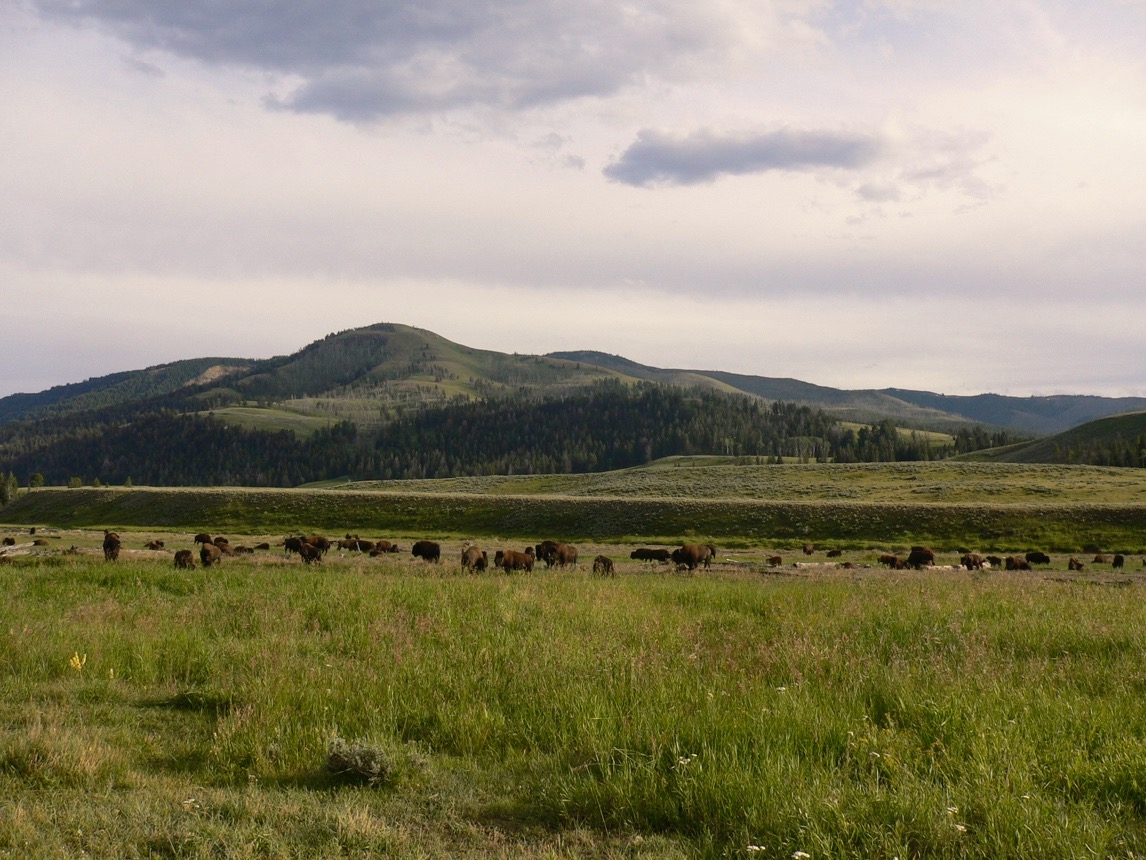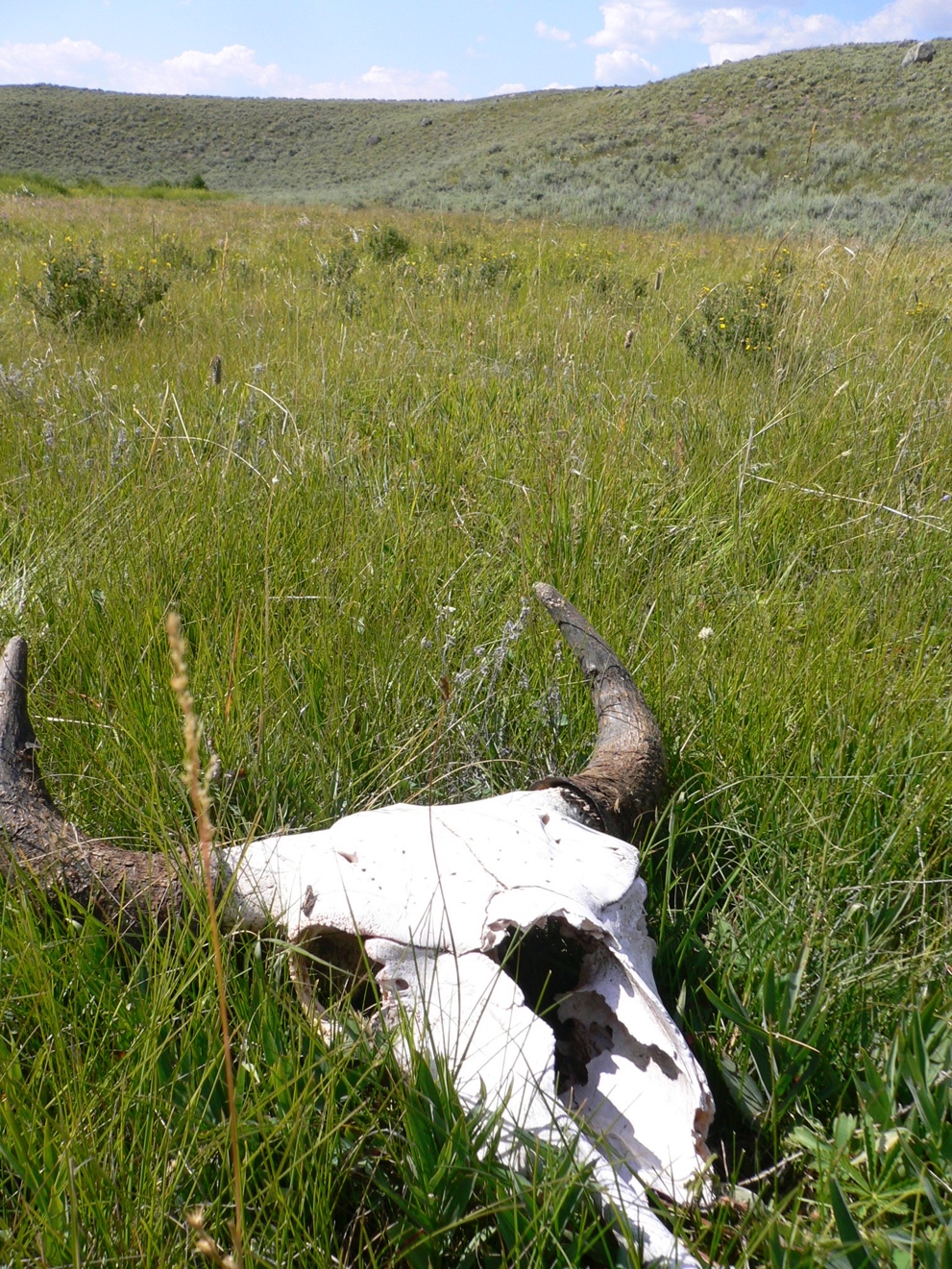
In mammals, sexes often differ in adult body size, with adult males being substantially larger than their female counterparts. This variation in body size can lead to significant differences in nutritional requirements, a phenomenon commonly referred to as diet segregation. Females, due to their smaller size and shorter digestive tract, tend to process food more rapidly than males do, and as a result, require higher quality food. Because of their larger size, males are more efficient at converting low-quality food into usable energy, and thus, are more concerned with quantity.
Differences in nutritional demands between sexes can lead to different habitat requirements, particularly among large mammalian herbivores. One such example is the American bison (Bison bison), which once roamed freely over much of North America. Although American bison primarily eat grass, they also consume minor amounts of herbs, shrubs, and twigs.
In American bison, the sexes vary greatly in size, with the average male weighing 350 kg more than the average female. During the late-summer mating season, male and female bison form large herds, and remain in these groups for approximately one month. Throughout the rest of the year, females and calves remain in groups, while males typically spend this time roaming the landscape as individuals. If segregation behavior in bison is influenced by sex-specific nutritional demands, then differences in the diets of males and females should be more apparent during certain times of year than others (e.g., mating season vs. the rest of the year).
Yellowstone National Park (YNP), which lies in the northwest corner of Wyoming U.S.A., is a forested mountain ecosystem with grasslands, wetland meadows, and geothermal areas. Yellowstone is the only place in the United States where bison have lived continuously since prehistoric times, and they are one of seven species of native ungulate resident to the park.

Within Yellowstone, the bison population consists of two geographically distinct subpopulations that reside in the Northern and Central ranges. These ranges differ in bedrock geology, soil type, topography, geothermal activity, and winter severity. In addition, both elk and bison are more abundant on the Northern Range than on the Central Range. These differences likely influence the composition and quality of bison diets in each range. If segregation of bison in YNP is influenced by sex-specific nutritional demands, then the degree of diet segregation in each range should differ as well.
To determine if the diets of males and females are different, we collected samples of bone from the skeletons of adult bison. We also collected fresh fecal samples by observing and following individual adults during the late-summer mating season. From these samples, we determined the stable isotopes of carbon and nitrogen, and fecal nitrogen content. These properties of bone and fecal samples indicate the protein content and diversity of plants consumed by individual animals.

Our findings show that the diets of male and female bison in YNP vary in composition, quality, and breadth. During the mating season, the average diet of male and female bison is composed of different plants. Females have higher quality diets, and males have more diverse diets. Throughout the rest of the year, the average diets of male and female bison are composed of similar items. However, females still have higher quality diets, and males, more diverse diets.
We also found that both subpopulations exhibit diet segregation, but they do so during different times of year. In the Central Range, diet segregation was apparent during the mating season, whereas in the Northern Range, diet segregation was apparent during the non-mating season.
Comments